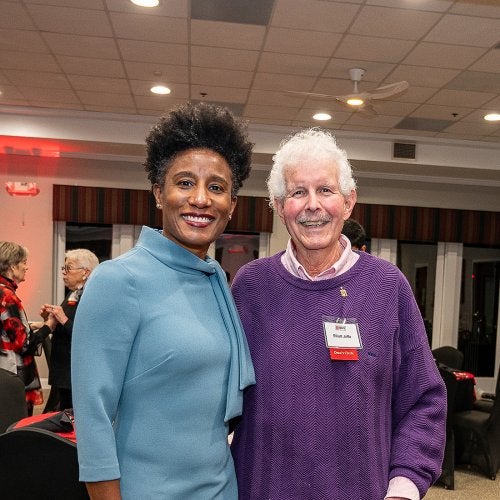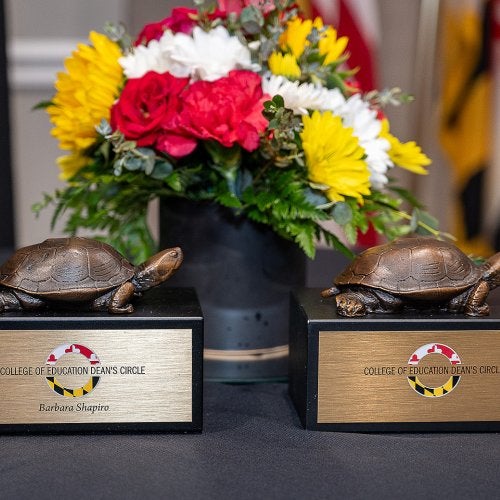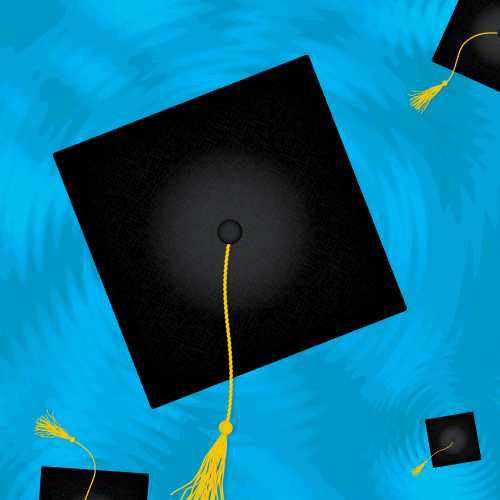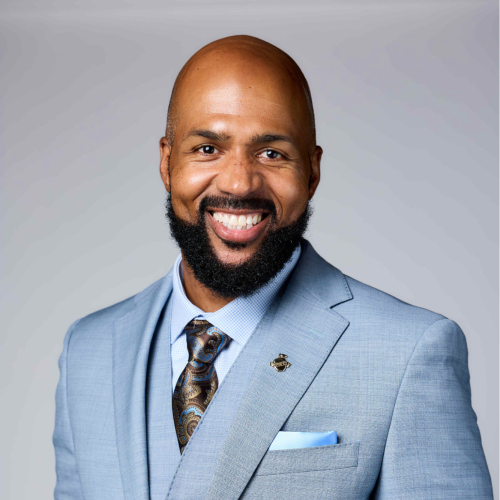
Recently, I have been reflecting on a visit I made to the James B. Hunt Jr. Library at North Carolina State University in Raleigh. This university clearly privileges the role its library plays as a nexus for the work of scholars. The building has iconic architecture, open spaces, an abundance of natural light, and a simply breathtaking reading lounge. Its technological features include high-definition video walls, videoconferencing facilities, innovative studio and group study rooms, and an automated book retrieval system activated from the online catalog that stores two million volumes while freeing up interior space for other uses. In short, it’s awe-inspiring. Hunt Library is what I think of now whenever I think about the future.
The University of Maryland is realizing its own imaginative vision for the future with the Edward St. John Teaching and Learning Center, the first academic building to be constructed on McKeldin Mall in fifty years. While not as outwardly striking, the St. John Center will be like Hunt Library in many ways – inspiring spaces, state-of-the-art technology, an expansive lounge with video walls, group study rooms, and classrooms designed for collaboration. It will house the instruction-oriented Teaching and Learning Transformation Center and President Loh’s visionary Academy for Innovation and Entrepreneurship, which seeks to broaden students’ post-collegiate horizons by giving them cross-disciplinary entrepreneurial knowledge. With the rise of the St. John Center, an intrepid future is coming to Maryland.
Why am I thinking about the future? Earlier this year, I accompanied College of Education faculty to a legislative hearing in Annapolis. I listened, testified, listened some more. The General Assembly launched a commission – of which I am a member – charged with examining Maryland’s teacher preparation programs and proposing some fundamental changes. I’ve been thinking about what those changes will need to be, and that means thinking about the future. If ever there was a time for fearless ideas, this is it.
If we are to envision and invent tomorrow’s classrooms, schools of education must bring seriousness and commitment to the task of recreating teacher preparation for a technologically advanced world. As American society evolves with globalization and exponential technological growth, this much is abundantly clear: understanding and implementing tech-rich education practices, especially blended learning, will be a basic requirement for tomorrow’s teachers.
Even tech-savvy teachers will, of course, continue to resemble their traditional counterparts in many ways. They will always need to know how to write sharp lesson plans and enact them well, how to capably lead class discussions, and how to nurture their students’ development within the social context of schooling. After all, students are and will always be people, not machines. But these teachers will need a plethora of additional skills and competencies. They will need to know how to make technology work seamlessly with their teaching, so that the learning experience is truly immersive for students. They will need to stay abreast of changes, so that they impart a measure of technological sophistication to students along with traditional course content. And they will also need to understand how to use data generated while students learn in online environments. In sum, teachers will need an unprecedented flexibility of practice.
In my travels on behalf of the College, I have found many reasons for optimism about this future. The proliferation of online learning is advancing distance learning, bringing together teachers and students across the span of hundreds of miles, greatly broadening educational opportunities. An example that springs right to mind is the Master of Arts in Teaching program at the University of Southern California’s Rossier School of Education. This fully online program is particularly attractive to working teachers, allowing them to pursue an advanced degree while continuing in their current jobs – a richly rewarding prospect. It also gives teacher candidates access to world-class education as they work toward certification in their home state.
In addition to creating new classrooms, technology is impacting the processes of schooling in many ways. Online learning is bringing to students the benefits of flexible scheduling and personalized educational experiences. Students can watch videos, listen to lectures, and read for courses from their computers, their iPads, their smartphones – learning can happen at any time, anywhere. They can “bundle” learning opportunities in ways that work with their learning styles. For instance, a student might prefer to take an online math class but to study a foreign language in a face-to-face environment. And increased access also allows students to review coursework in greater depth, revisiting lessons and materials to make sure they have mastered knowledge and ideas.
The fall 2015 issue of Endeavors will take readers inside College Park Academy, the blended learning charter school the College of Education helped establish three years ago in partnership with Prince George’s County
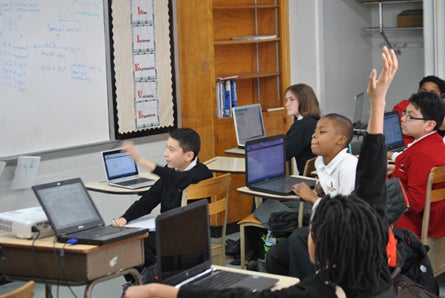
Smartly integrating educational technology with student-centered pedagogies presents challenges for teachers, but one lesson I believe we can learn from College Park Academy is that the challenges are far from insurmountable. The first key to meeting them – the salient one for schools of education – is preparing teachers to be curious and knowledgeable about educational technology, flexible and receptive to new ways of teaching, and crucially, willing to take that leap of faith which must accompany any experiment in the classroom. The second key, which school systems and policymakers must take note of, is providing teachers – even the bravest and best prepared – with the support they need both in these daily experiments and in the longer-term endeavor of improving their practices.
For education policy at all levels, the call is clear: incentivize teachers to adopt educational technology and, recognizing that pedagogical transformations take time and effort, give teachers that precious time and invest in their efforts.
For principals and other local administrators, the imperative to broaden and strengthen the use of educational technology is more problematic, because it implies a need for professional development funds that are frequently scarce and, in part, it also requires changes in school cultures. On this front, I believe the best advice for schools is to take stock of expertise they already have on hand: the handful of teachers – in every school, it seems, though they often go unnoticed – who are already doing exceptional work with technology in their classrooms.
The fall 2015 Endeavors also kicks off a new feature series called Te(a)ch, in which Dr. Cohen explores varieties of educational technology. The first Te(a)ch article profiles an education blog written by Northwestern High social studies teacher Billy Shulman, who experiments with digital tools. As insightful as this is for teachers expanding their pedagogical toolbox, it should also interest administrators. Many schools in fact have a Mr. Shulman, a fearless experimenter who realizes a potential for scaling up classroom innovations to progress the profession. I urge administrators to seek these teachers out and foster their work as agents of change.
At the College of Education, change agents on faculty pursue research to bring education and technology together fruitfully – people like Dr. June Ahn and Dr. Tamara Clegg. Jointly appointed here and in the College of Information Studies, Drs. Ahn and Clegg engineer digital learning experiences for STEM immersion and study the social aspects of digital use. These scholars imagine new educational environments online.
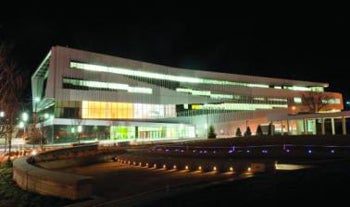
One of the many inspirational things about Hunt Library is how its designers imagined a collaborative space freed by technology, not oppressed by it. Cyberlearning likewise opens up a world of new possibilities for classrooms. For instance, instead of a traditional one-teacher classroom, imagine a large, differentiated learning center where many teachers work together under the tutelage of a highly experienced master teacher. Imagine a school in which this classroom paradigm is the blueprint for departmental structure. What unguessed-at opportunities might such a school create for collaboration among its students and for professional development among its teachers?
The College of Education graduates who walked across the stage this May and embarked on careers as teachers could still be teaching in the year 2050 and beyond. What will education look like then? How do we prepare teachers for a classroom that has yet to evolve? What is a 21st-century classroom? I have no quick answers, I admit, just as I am equally sure there is no “silver bullet” for solving the myriad of problems faced by our teachers, education scholars, school administrators, and legislators. I have only speculated here, because in my view these questions are too important for either a cursory treatment or a limited perspective. We must take them up together.
We must take these questions up with imagination, with vigor, with boldness.
A former public school teacher, Dr. Donna L. Wiseman is the Dean of the College of Education and Professor of Literacy in the Department of Teaching and Learning, Policy and Leadership. Dr. Wiseman’s professional and scholarly interests include literacy development and instruction, school-university partnerships, teachers’ professional development, diversity in today's classrooms, and equitable access to education.
